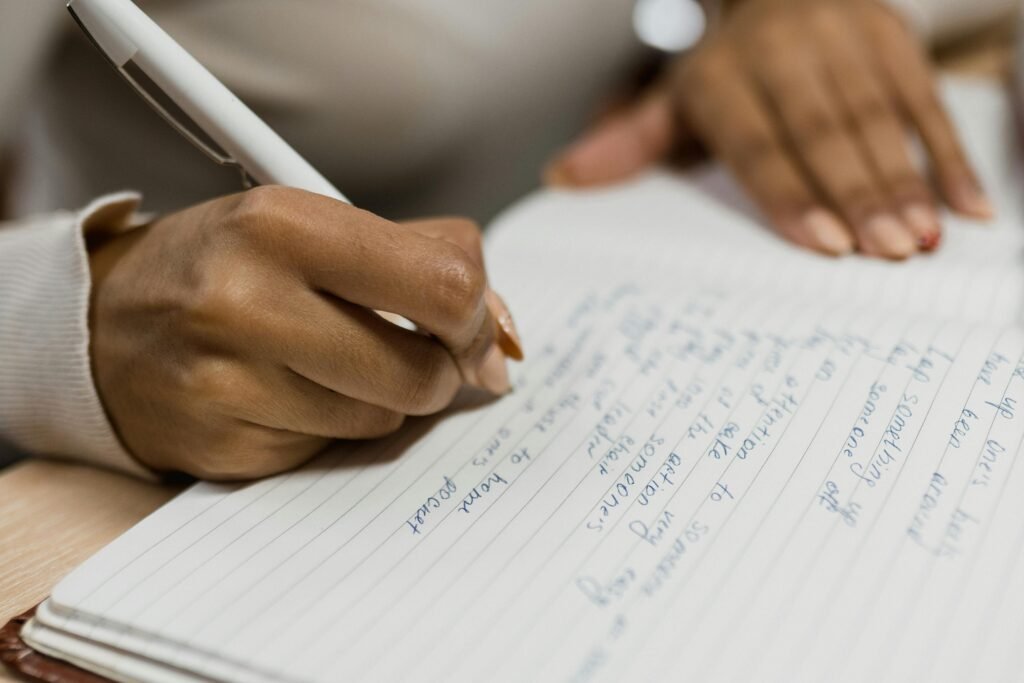
Introduction to Mindfulness and Emotional Intelligence
With the dizzying pace of today’s world, finding ways to enhance emotional intelligence is crucial for personal and professional success.
Mindfulness exercises offer practical tools to improve our ability to understand and manage emotions.
By incorporating these practices into daily routines, individuals can develop mental resilience and strengthen their emotional capabilities.
Mindfulness, at its core, is the practice of being present and fully engaged with the here and now.
It involves paying attention to thoughts, feelings, and surroundings without judgment.
This heightened awareness can be a game changer for emotional intelligence, which encompasses the ability to recognize, understand, and manage our own emotions, as well as empathize with the emotions of others.
One key aspect of emotional intelligence is self awareness.
Mindfulness practices such as focused breathing and mindful observation can significantly enhance this awareness.
By paying attention to our breath, we create a mental pause that allows us to notice our emotions as they surface.
This awareness is the first step in understanding and managing our emotional responses effectively.
Another important element is self regulation, which involves managing our emotional reactions to situations.
Mindfulness techniques like body scanning help in this regard by reducing stress and promoting a calm state of mind.
When we are less stressed, we are better equipped to handle emotional challenges and respond thoughtfully rather than impulsively.
Empathy, the ability to understand and share the feelings of others, is also a vital component of emotional intelligence.
Practices such as loving kindness meditation foster a sense of compassion and connectivity with others.
By cultivating empathy, we enhance our interpersonal relationships and create a more supportive social environment.
In addition to these core elements, mindfulness exercises also contribute to improved focus and mental clarity.
This is particularly beneficial in professional settings where emotional intelligence can lead to better decision making, enhanced leadership skills, and more effective communication.
Incorporating mindfulness into daily routines doesn’t require significant time or effort.
Simple practices like taking a few minutes each day to focus on your breath or jotting down your thoughts in a journal can make a significant difference.
The key is consistency and making these practices a regular part of your life.
By integrating mindfulness exercises into your routine, you can cultivate emotional intelligence and build mental resilience.
These practices not only help in managing stress and emotional reactions but also enhance your overall well being, making you more adept at navigating the complexities of daily life.
Breathing Techniques for Emotional Awareness

Breathing is an invaluable tool for deepening emotional awareness and promoting mental clarity.
One effective technique is the 4-7-8 breathing method.
To practice, inhale for four counts, hold the breath for seven counts, and exhale for eight counts.
This simple exercise helps to calm the mind and reduce stress, making it easier to identify and understand your emotions.
Another helpful method is diaphragmatic breathing.
Often referred to as “belly breathing,” this technique involves inhaling deeply through the nose, allowing your abdomen to expand, and then exhaling slowly through the mouth.
Place one hand on your chest and the other on your belly to feel the rise and fall of your diaphragm.
This practice not only enhances emotional regulation but also lowers heart rate and stabilizes blood pressure, creating a more relaxed state.
For those who find it challenging to focus, box breathing can be a great alternative.
Box breathing involves inhaling for four counts, holding the breath for four counts, exhaling for four counts, and holding again for four counts.
Visualize a box in your mind, with each breath cycle completing one side of the square.
This structured approach can help you concentrate better and become more attuned to your emotional state.
Incorporating these techniques into your daily routine can have profound effects on your emotional well being.
Try setting aside just five minutes each morning to practice focused breathing.
This brief session can set a calm and mindful tone for the rest of your day.
Over time, you may find that you are more in tune with your emotional landscape, making it easier to navigate through life’s challenges with grace and composure.
Additionally, mindful breathing exercises can be seamlessly integrated into your day.
When you notice yourself feeling stressed or overwhelmed, take a moment to focus on your breath.
Even a few deep, intentional breaths can create a sense of immediate relief and clarity.
By regularly practicing these techniques, you build a valuable toolkit for emotional regulation and resilience.
Remember, the key to reaping the benefits of these breathing techniques lies in consistency.
Make it a habit to check in with your breath throughout the day, using it as a touchstone to ground yourself and gain emotional insight.
Whether you’re facing a high-pressure situation at work or simply going about your daily activities, these practices can help you stay centered and emotionally balanced.
Mindful Observation Practices

Mindful observation is a practice that invites us to fully engage with our surroundings, sharpening our awareness and enhancing emotional insight.
This exercise is more than just looking at the world; it’s about seeing it with fresh eyes and an open heart, free from preconceptions or judgments.
One effective way to practice mindful observation is to immerse yourself in a natural setting, such as a park or garden.
Sit quietly and observe your environment.
Notice the colors of the leaves, the way the light filters through the trees, and the sounds of birds or rustling branches.
Pay attention to the smallest details, like the texture of the grass or the patterns on a flower petal.
This practice helps you become more attuned to your surroundings and more aware of how they influence your emotions.
If you prefer an indoor setting, choose an object like a piece of art, a plant, or even a cup of tea.
Focus all your attention on this object for several minutes.
Observe its shape, color, texture, and any other characteristics without labeling or analyzing them.
Simply take in the details as they are, noticing your thoughts and emotions as they arise.
Mindful observation can also be practiced in social settings.
The next time you’re in a conversation, try to be fully present.
Observe the other person’s body language, facial expressions, and tone of voice.
Notice how these non-verbal cues affect your emotional responses.
This heightened awareness can improve your empathy and strengthen your interpersonal relationships.
For a more structured practice, you might try a sensory walk.
During this walk, focus on engaging all five senses.
Notice the sensation of your feet hitting the ground, the smell of the air, the sounds around you, the visual details of your path, and even the taste in your mouth.
By involving all your senses, you create a rich tapestry of experience that keeps you grounded in the present moment.
Mindful observation isn’t just about what you see; it’s also about how you interpret what you see.
By approaching your environment with curiosity and openness, you can uncover layers of meaning and emotional insight that might otherwise go unnoticed.
This practice encourages a deeper connection with the world around you and fosters a more balanced emotional state.
Incorporating mindful observation into your daily routine can be as simple as taking a few minutes each day to notice your surroundings with intention.
Whether you’re observing nature, an object, or a social interaction, the key is to remain present and open, allowing your observations to enrich your emotional awareness and resilience.
Body Scan for Stress Reduction

The body scan is a highly effective mindfulness technique that helps to reduce stress and increase focus by directing your attention through different parts of your body.
Here’s a step-by-step guide to practicing a body scan exercise:
1. Find a Comfortable Position: Begin by finding a comfortable position. You can sit or lie down, whichever feels most relaxing to you. Make sure your environment is quiet and free from distractions.
2. Close Your Eyes and Breathe: Close your eyes gently and take a few deep breaths. Allow your breath to settle into a natural rhythm. This helps to center your mind and prepares you for the exercise.
3. Focus on Your Toes: Start by bringing your attention to your toes. Notice any sensations, whether it’s warmth, coolness, tingling, or even numbness. There’s no need to change anything; simply observe.
4. Move Up Through Your Body: Gradually shift your focus upwards, moving from your toes to your feet, ankles, calves, knees, thighs, and so on. Spend a few moments on each part, noticing any tension or discomfort. Continue this process up through your body, including your lower back, upper back, abdomen, chest, shoulders, arms, hands, neck, and head.
5. Release Tension with Your Breath: As you focus on each area, use your breath to help release any tension. For example, when you notice tightness in your shoulders, visualize the tension dissolving with each exhale.
6. Acknowledge Sensations Without Judgment: Throughout the scan, acknowledge any sensations you feel without labeling them as good or bad. This non-judgmental awareness is key to mindfulness.
7. Complete the Scan: Once you’ve reached the top of your head, take a few more deep breaths. Allow yourself to take in the overall sense of relaxation and awareness you’ve cultivated.
The body scan can be particularly helpful for those dealing with stress or anxiety.
By systematically focusing on different parts of your body, you can identify areas where you hold tension and consciously release it.
This practice not only reduces physical discomfort but also promotes a sense of mental calm and clarity.
It’s recommended to practice the body scan regularly, even if only for a few minutes each day.
The cumulative effect of this practice can lead to significant improvements in how you manage stress and maintain emotional balance.
You can also tailor the body scan to fit into your daily routine.
For instance, you can do a shorter version during a lunch break or a more extended session before bed to help you wind down.
Over time, you may find that you are more attuned to your body’s signals, which can be invaluable for emotional regulation and overall well-being.
In addition to reducing stress, the body scan can improve your ability to concentrate and stay present.
This heightened awareness can help you navigate daily challenges with greater ease and composure, making it a valuable tool for enhancing both emotional intelligence and mental resilience.
Journaling for Emotional Processing

Journaling offers a unique avenue for gaining deeper emotional insight and fostering personal growth.
By putting pen to paper, you create a space for reflection, helping you to identify and understand the emotional patterns that shape your daily experiences.
This practice not only clarifies your thoughts but also acts as a powerful tool for emotional regulation.
One effective way to start is by setting aside a few minutes each day to write about your emotional experiences.
You might begin by recounting the events of your day, focusing on moments that elicited strong emotions.
What were the triggers? How did you react? What were the physical sensations you experienced?
This kind of detailed journaling helps you become more attuned to your emotional landscape.
To dig even deeper, consider using specific prompts.
Questions like “What emotions stood out to me today?” or “What situations triggered these emotions, and why?” can guide your writing and bring more structure to your reflections.
Another helpful prompt could be, “How did I cope with today’s challenges, and what can I learn from my responses?”
These questions encourage you to think critically about your emotional reactions and identify areas for growth.
Another valuable approach is to focus on gratitude.
Taking a moment to write down things you’re grateful for can shift your perspective and enhance your emotional well being.
This doesn’t have to be anything grand; even small moments of joy, like a pleasant conversation or a good meal, are worth noting.
Over time, this practice can help cultivate a more positive outlook and increase emotional resilience.
For those grappling with specific emotional challenges, journaling can serve as a therapeutic outlet.
If you’re dealing with stress, anxiety, or sadness, writing about these feelings can provide a sense of relief and clarity.
Try to be as honest as possible in your entries.
Authenticity in your writing allows you to confront your emotions head on, which is a crucial step toward processing and understanding them.
Visual journaling is another creative approach that can be particularly beneficial for those who find traditional writing challenging. Incorporate drawings, doodles, or even collages to express your emotions visually.
This can be a liberating way to capture your feelings, especially when words fall short.
Journaling doesn’t have to be a solitary activity.
Sharing your entries with a trusted friend or a therapist can provide additional perspectives and insights.
Discussing your written reflections can open up new avenues for understanding and emotional growth.
Consistency is key to reaping the benefits of journaling.
Make it a habit, whether it’s a daily, weekly, or even bi-weekly practice.
The important thing is to create a regular space for emotional exploration.
By integrating journaling into your routine, you develop a valuable habit that supports emotional intelligence and mental resilience.
Loving Kindness Meditation for Compassion

Loving kindness meditation is a life changing practice that fosters compassion towards oneself and others.
To practice this meditation, find a comfortable seat and close your eyes.
Begin by focusing on yourself and silently repeating phrases like, “May I be happy, may I be healthy, may I be at peace.”
Gradually extend these wishes to loved ones, acquaintances, and eventually to all living beings.
Engaging in loving kindness meditation can enhance emotional intelligence and improve relationships.
Incorporating these mindfulness exercises into your routine can significantly boost emotional resilience and foster mental strength.
Whether it’s through mindful breathing, observation, or meditation, each practice contributes to a greater understanding and management of emotions, promoting overall mental wellness.
